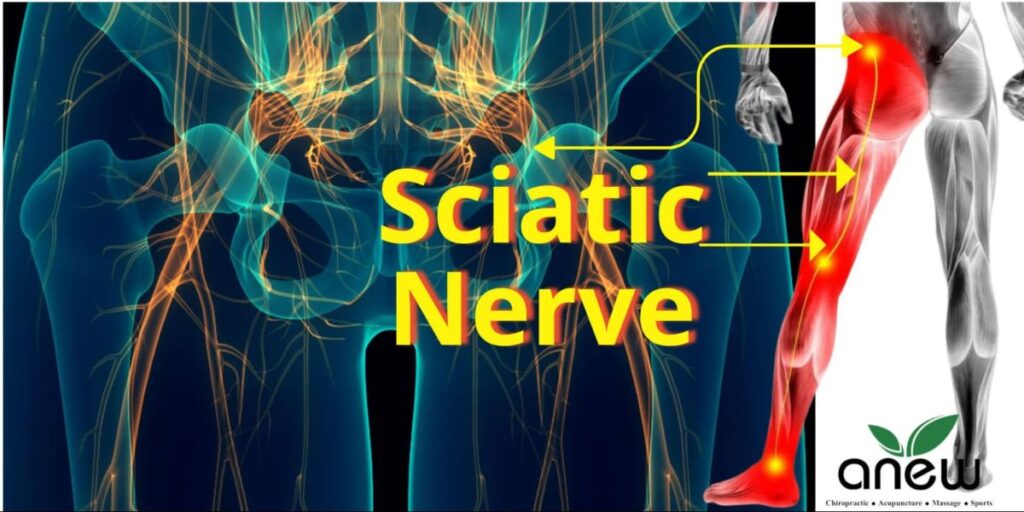Causes, Diagnosis, & Treatment of Lower Back Strain
Acute muscle strains occur when there’s sudden damage to a muscle, tendon or ligament. Heavy lifting or extreme pressure placed on the spine and surrounding soft tissues during an activity or receiving a jarring impact to the lower back can cause muscle strain.
However, in the case of Chronic strains repetitive movements over time will gradually tear a muscle and is more common in athletes or in individuals that have very physically demanding jobs.
Causes and Diagnosis of Lower Back Muscle Strain
Lower back strains can happen when you least expect them, such as when you are taking a walk, or simple bending over.
Some causes of low back muscle strain include some of the following:
- Starting a new activity. A new sport or activity can place new and unfamiliar stress on a muscle that has not been strengthened to handle the added exertion due to inactivity.
- A sudden blow or impact. Jarring motions to the lower back place immediate stress on the lumbar muscles. Sports like football and soccer place tremendous pressure on a body’s joints and muscles. Other sudden impact events like falling from a height or a car accident can cause lower back strain as well.
- Weak abdominal and/or weak back muscles. Your lower back becomes susceptible to injury when you have weak abdominal and back muscles. These weakened muscles can cause you to slouch forward placing greater stress on the lower back muscles and on the spine. Additionally, slouching forward causes your hamstrings to tighten, which further places stress on your lower back.
- Lifting heavy objects. This is especially risky because oftentimes without thinking about it, there is a twisting of the spine as you pick something up off of the floor and put it down. Conversely, lifting a heavy object from overhead and placing it on a lower surface can place unnecessary stress on the lower back and cause muscle strain.
- Repeated motions. When there are repeated motions over time placed on a muscle group, they can cause muscle strain. The pain from the lower back muscle strain can worsen if the muscle is already sore and is then continually put under repeated continuous stress.
While there are many ways that you could pull a muscle in your back, these are just a few of the activities and ways that may provoke an injury in your back.
You may also be at higher risk of pulling a back muscle if you struggle with obesity, smoke nicotine, or already have limited range of motion or stiffness in your back from a prior injury.
How do you Diagnose Low Back Muscle Strain
A doctor will normally collect the patient’s medical history and conduct a physical exam in order to diagnose any kind of lower back muscle strain. The medical history will explore the following;
- Where does the pain originate from and the intensity?
- Was there a precipitating event such as a fall or lifting something which caused the pain?
- Did the pain come on gradually over a long time from doing exercise or repeatedly doing a work related physical task?
- How long has the pain been there and is it getting worse or improving?
- Are you taking any medication for the pain currently?
- What are your sleep, exercise, and eating habits?
The physical exam will typically cover the following;
- What is the range-of-motion in the lower back as well as flexibility
- The doctor will also check the range-of-motion and flexibility in the pelvis and hamstring muscles,
- They will feel along the back with their fingers to see if there are any kind of bumps or protrusions from the spinal cord where there may be pain as there could be nerve root irritation. If there is nerve root irritation, this can be detected through a leg raise test.
- A doctor will also check for spinal stenosis or a herniated disc during the exam.
Speaking of herniated discs, a doctor may want to order an MRI or an X-ray if they believe that these conditions exist. Especially if there is a history of a prior trauma, imaging tests are usually ordered before any kind of exercise treatment plan is indicated.
Keep in mind that an X-ray will typically be taken during the examination, however, an MRI is usually not ordered for a muscle injury, unless there is a suspected herniated disc or fracture.
Pulled Back Muscle Treatment
Despite the pain, if anything good can be said about a back muscle strain is that it will gradually get better over time without a lot of intervention. However, with that in mind, watch for worsening symptoms over the couple of weeks it takes for the lower back muscle strain to heal. As with any injury, avoid aggressive movements or vigorous exercise, and take it easy on the road back to a healthy lower back.
Initial Treatments for Low Back Muscle Strain
As discussed above, a lower back muscle strain does not take a lot of medical intervention and they usually resolve by themselves over a couple of weeks, depending on the severity and pain. However, some typical treatments for a pulled lower back muscle include the following:
- A pulled back muscle will cause inflammation, so taking a NSAID-non steroidal anti-inflammatory drug such as naproxen, ibuprofen, or aspirin will help reduce the inflammation and consequently the pain.
- You may also want to take acetaminophen as it minimizes pain by causing the brain to interpret pain signals in such a way that pain registers less. You can get acetaminophen over the counter or also as a prescription medication, such as when combined with an opioid.
- When you’re able to withstand pressure in the injured area, a neuromuscular massage does wonders. It not only relaxes the muscle tissues but it helps improve circulation. Most importantly, it helps to release endorphins, the feel good chemicals in your brain, causing fewer pain signals in the central nervous system.
- You may choose to use muscle relaxants, however they should only be used on a short term basis to reduce muscle spasms since they are highly addictive. Despite their name, muscle relaxants don’t directly work on muscles, rather, they lessen the degree of pain registered by the central nervous system’s pain receptors.
- Get moving. Something as simple as walking, even if it’s just for a few minutes a day, several times a day, can help reduce stiffness and aid in the process of reducing pain.Moving your body helps keep your spine functional and healthy, and should be incorporated into your lifestyle.
- Ice packs are always recommended to use immediately after a muscle injury occurs and you would typically place an ice pack over the strained muscle for 10 to 20 minutes periodically throughout the day to reduce inflammation. Make sure you use a dry towel between the ice pack and skin in order to prevent ice burn.
- Using a heat pack is also recommended. When you have a pulled muscle, a heat pack placed directly onto the pulled muscle helps to speed healing by improving blood flow in the affected muscle. However, it is not recommended that you apply heat for at least 48 hours after an injury has occurred.
This list is not exhaustive by any means, and there are other options available, such as spinal manipulation, acupuncture, and medication. But, many medications have side effects. Besides being addictive in nature, muscle relaxers and opioids can cause dizziness, nausea, and vomiting.
If you have suffered a lower back muscle strain from doing normal everyday activities, then this is indicative of a spine that is unable to support the weight of the upper body and is out of condition. It’s important to incorporate active stretching and strengthening exercises to be able to prevent any future occurrences of lower back strain from taking place.





